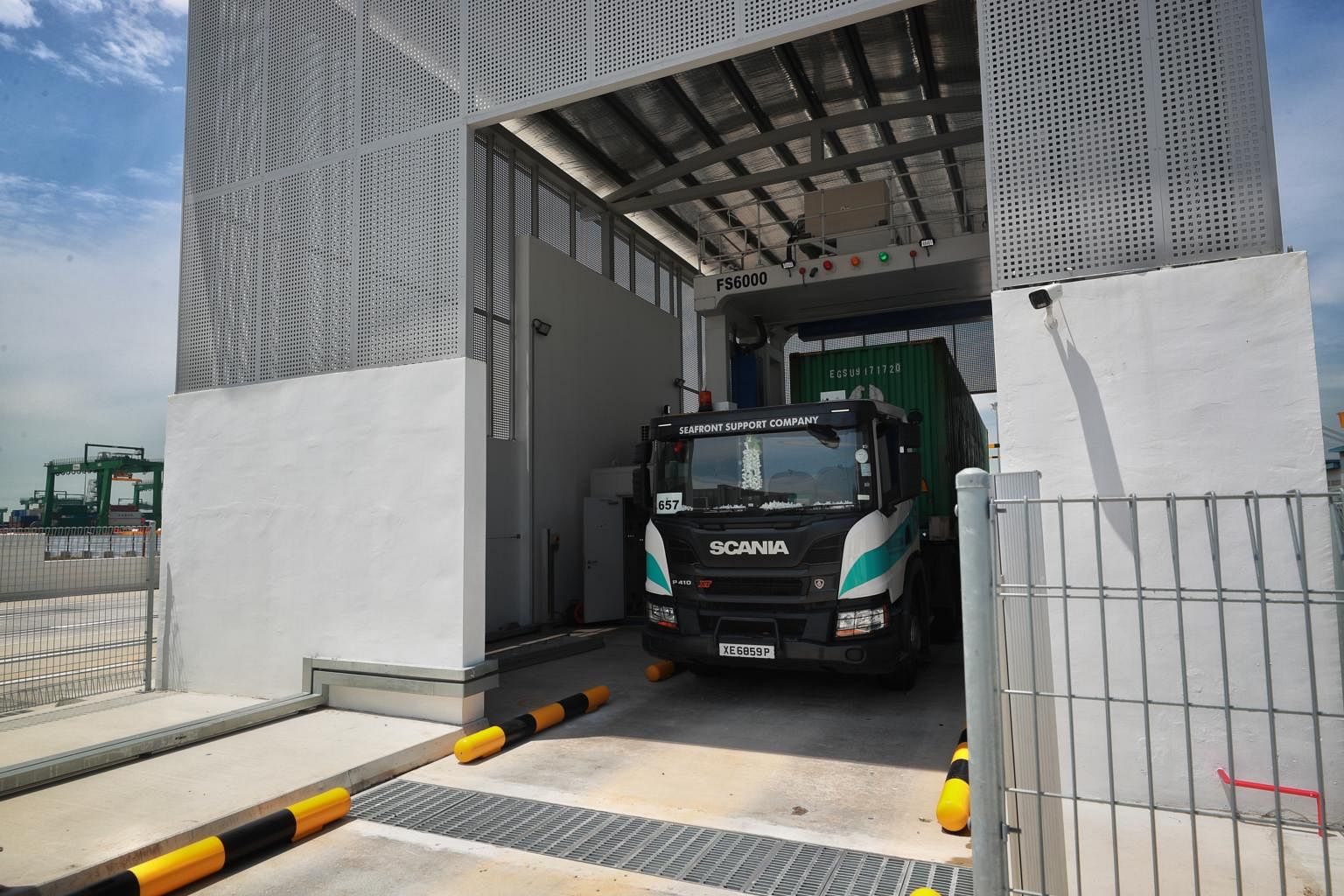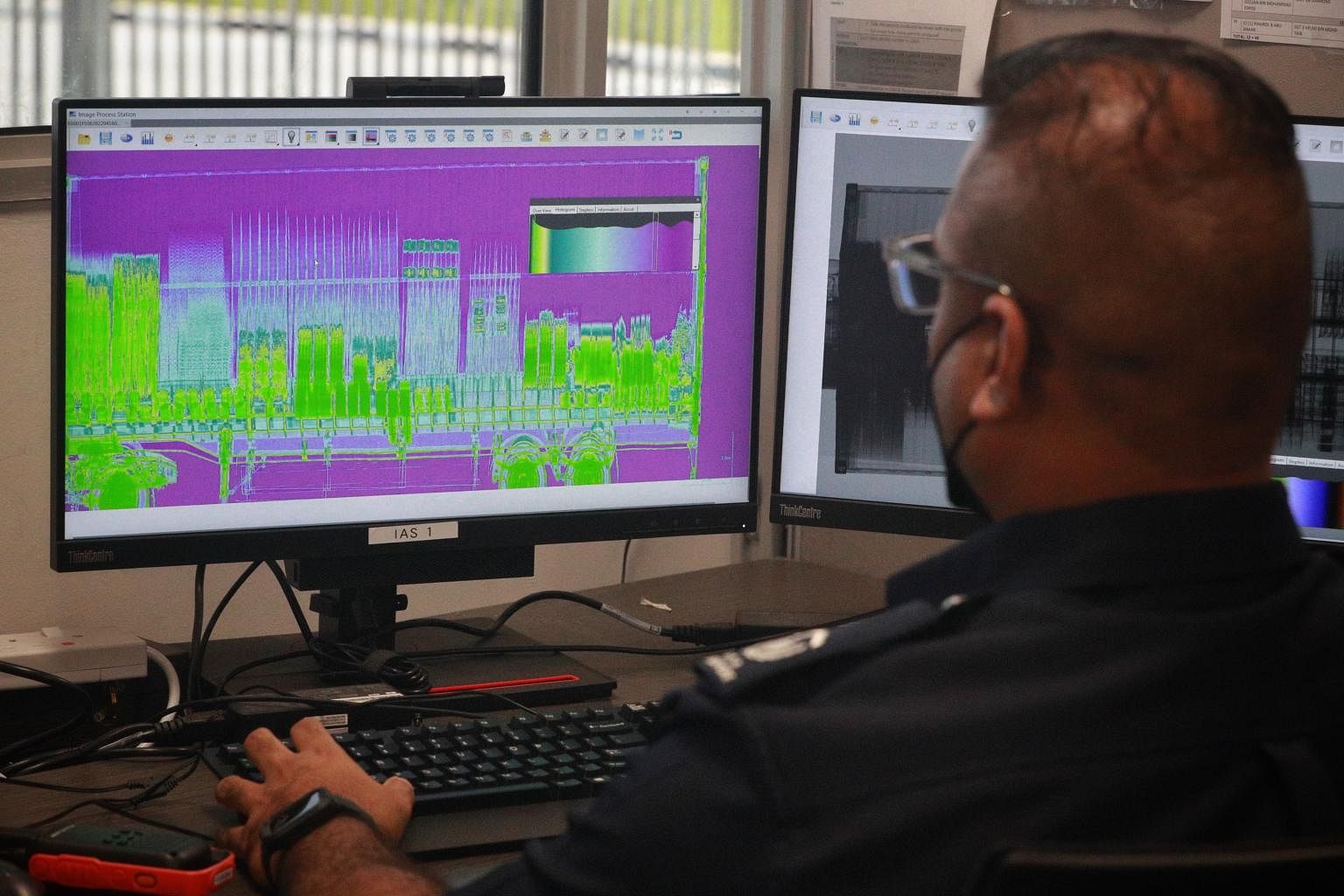Faster cargo clearance at Tuas Port as ICA taps technology to handle higher shipment volumes
Sign up now: Get ST's newsletters delivered to your inbox
Follow topic:
SINGAPORE - Mobile technology is enabling Immigration and Checkpoints Authority (ICA) officers to clear cargo on the fly and drivers no longer have to wait in a holding area to receive the image scan results of their cargo.
An initiative called On-the-Fly Clearance, which was implemented at Tuas Port last October, cuts the drivers’ waiting time to between three and five minutes from between 14 and 20 minutes.
This comes as ICA prepares Tuas Port to handle larger volumes of cargo, which is expected to increase as Singapore strengthens its position as a global trade hub.
Speaking to reporters on Monday (April 18) at a media tour of Tuas Port, Superintendent 1A Cedric Law, the deputy director of ICA's operations division, noted how by 2040, Tuas Port is expected to handle 65 million 20-foot equivalent units (TEUs) of cargo annually.
This is a 30 per cent increase in Singapore's current annual handling capacity of 50 million TEUs. The higher capacity will come as Tuas Port consolidates current operations at Tanjong Pagar, Keppel, Brani and Pasir Panjang terminals.
Supt 1A Law said: "And... as security needs evolve, there will be added requirements. So the implementation of the New Clearance Concept for Cargo will be critical in addressing these needs."
Initiatives under the concept will be introduced from next year.
One of the initiatives is the gradual introduction of paperless clearance for conventional cargo - goods that are loaded onto vehicles without the use of a container.
Drivers will submit their vehicle licence plate number and corresponding permit number via ICA's SG Arrival Card e-service before the cargo arrives at the checkpoint. ICA officers will then match the details for clearance purposes.
Currently, cargo drivers have to present hard copies of permits and supporting documents at the checkpoints, where ICA officers scan each permit's barcode to retrieve cargo information and for validation.
Going paperless and other tech initiatives will reduce the time taken for cargo clearance, said ICA.
It added: "With the time savings, industry partners can optimise resources and increase the number of trips made per day."
The On-the-Fly Clearance process and another initiative already in place - the mobile cargo screening system - help to save time.
On-the-Fly Clearance cuts the time drivers spend at the radiographic scanning portal.
At older port terminals, drivers have to wait in a holding area for the results of an image scan intended to identify anomalies in their cargo, such as the presence of odd-shaped items or those with uneven image density.


But at Tuas Port, where On-the-Fly Clearance is being used, drivers can continue their journey towards the terminal exit gate after passing through the radiographic scanning portal as their results will be digitally sent to them through the vehicle's mobile data terminal.
With the mobile cargo screening system, ICA officers conducting secondary checks on the cargo use mobile tablets to validate cargo clearance permits. In older terminals, they would have to go to the duty office to use a desktop computer.
The mobile system is being used at Tuas Port and the Changi Airfreight Centre, but will be rolled out to all cargo checkpoints progressively.


